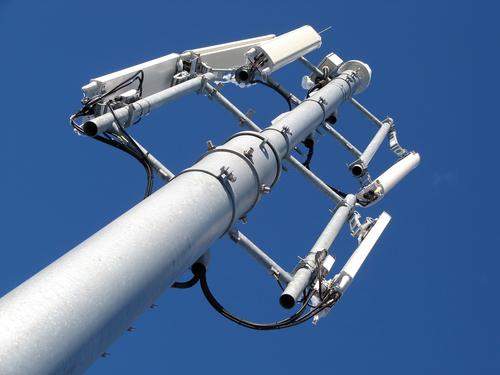 NBN Co has started to sell the higher speed 25/5 Mbps wireless broadband. The faster speed service is wholesaled at $27 per month just $3 more than the original 12/1 Mbps service.
NBN Co has started to sell the higher speed 25/5 Mbps wireless broadband. The faster speed service is wholesaled at $27 per month just $3 more than the original 12/1 Mbps service.
The fixed wireless part of the NBN which is expected to service some 4% of NBN connections (around 500,000 premises) when it is completed in 2015. It will use around 2,300 base stations each costing between $300,000 and $400,000. The base stations will be equipped with TDD LTE technology using the 2.3 and 3.4 GHz spectrum which NBN acquired from Austar for $M120 in February 2011. This spectrum 98 MHz in 2.3GHz band and 65 MHz in 3.4 GHz band came to Austar as part of a swap with Unwired (then Vivid Wireless now owned by Optus). Basically Unwired had the spectrum in metro areas and Austar had the non metro.
The fixed wireless equipment used by NBN for this service is to be provided, built, operated and maintained by Ericsson. The up to $1.1Bn contract for this work was let in June 2011 and includes options covering 10 years. The contract also covers business support systems including service activation, management and assurance as well as network performance and capacity management. The agreement requires Ericsson to design, build, operate and maintain NBN Co’s network end-to-end, including business support systems.
 By March 2013 17,000 fixed wireless customers were connected and there are now around 80 base stations completed. NBN had targeted 70,000 fixed wireless connections by the end of June in its August 2012 Corporate Plan. This seems unlikely to be achieved. It appears that the NBN is not immune from the problems of site access and approval for base station sites which beset all mobile operators. As well CEO Mike Quigley has pointed to some radio path issues which may require changed designs further slowing progress.
By March 2013 17,000 fixed wireless customers were connected and there are now around 80 base stations completed. NBN had targeted 70,000 fixed wireless connections by the end of June in its August 2012 Corporate Plan. This seems unlikely to be achieved. It appears that the NBN is not immune from the problems of site access and approval for base station sites which beset all mobile operators. As well CEO Mike Quigley has pointed to some radio path issues which may require changed designs further slowing progress.
The NBN approach should offer good speed stability – obviously not as fast or consistent as fibre (either FTTP or FTTN) but superior to true mobile wireless broadband. NBN can engineer the TDD LTE base station capacity to the known demand of the customers served by the site. The radio path can also be more controlled as the customer antenna is externally mounted and can give predictable signal strength and signal to noise performance. NBN has a lot of spectrum to work with. It is higher frequency than common mobile broadband networks leading to higher radio path losses. The greater path loss however can be compensated for by the higher gain of the customer antenna and the predictable path due to the fixed external to the building mounting. NBN has another strength in that it has access to fibre links and so it can engineer the base station backhaul capacity (the capacity of the transmission link from the base station to one of the 252 points of interconnection) to match customer demand on the base station.
The NBN Fixed Wireless Factsheet is here.
The 3% of the NBN’s customers using satellite will also get 25/5 Mbps service once the two new dedicated NBN Ka-band (26-40 GHz) satellites are launched by Ariane Space from Guiana Space Centre in French Guiana in 2015. These satellites NBN Co 1A and NBN Co 1B will be launched using Ariane 5 770 tonne heavy-lift rockets under the $300M launch contract.The satellites each costing $1Bn and with 80 Gbps capacity will be built by Californian company Space Systems Loral. At present around 25,000 connections have been made by NBN using their interim satellite service at speeds of 6 Mbps. This interim service was lauched on 1st July 2011 using satellite capacity rented from Optus ($200M) and IPStar ($100M). These interim service connections and the balance of NBN satellite customers will be converted to the 25/5 service following the commissioning of the new NBN satellites in 2015.
